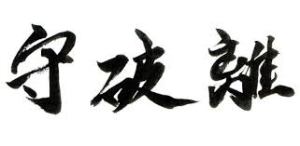 Most of us have heard of the principle of shu-ha-ri. In (shu) you start kendo and entrust yourself completely to a single teacher who gets you to the next stage (ha). You then have the freedom to learn from other teachers before you reach (ri) and the chance to develop technique under your own guidance. I have never heard a precise explanation of the timescales involved in each of these stages or the grades you need to attain before you move on, but my guess is that you reach ha in the middle dan ranks and only touch on ri when you are firmly into the kodansha stage.
Most of us have heard of the principle of shu-ha-ri. In (shu) you start kendo and entrust yourself completely to a single teacher who gets you to the next stage (ha). You then have the freedom to learn from other teachers before you reach (ri) and the chance to develop technique under your own guidance. I have never heard a precise explanation of the timescales involved in each of these stages or the grades you need to attain before you move on, but my guess is that you reach ha in the middle dan ranks and only touch on ri when you are firmly into the kodansha stage.
This all sounds ideal and I have many friends who were lucky enough to go through junior, middle and high school kendo clubs under the guidance of 7th and 8th dan teachers and they just needed to turn up and do their best. On the other hand I know kenshi from around the globe who are either self-taught or who rely on someone who is their senior by a narrow margin or who are a page ahead in reading the instruction book. There are online and print resources that can help the learning process, but to improve we all need the help of experienced sensei as and when it is available.
We can get this type of help by visiting sensei (in your own country or abroad), or by attending seminars when skilled instructors are invited by your club or national federation. I have had discussions in the past with my friend George McCall, of Kenshi247 fame who emphatically points out that this is not the same as learning from these sensei on an everyday ongoing basis. Having had the experience of doing this when resident in Japan I agree with him. I still feel that any exposure to leading instructors gives your kendo a boost.
One of the challenges however, particularly for less experienced kenshi, is that different teachers have different ways of getting us to improve. Don’t shoot me if I get one of these wrong, but to the best of my recollection Chiba sensei said bring the shinai back 45 degrees, Sumi sensei said 45 degrees, Sueno sensei said let it go past that point and Iwadate sensei said let the shinai touch your bottom.
All of these gentlemen are hanshi, all are capable of highly impressive kendo, all have trained champions and all have different ways of getting us to do correct kendo. My only suggestion is that if you are lucky enough to have the chance to learn from these or any of the other top teachers. Do as they say, try it for a while and see what works for you. This may put you in danger of some premature ri, but hey, nobody is perfect.









